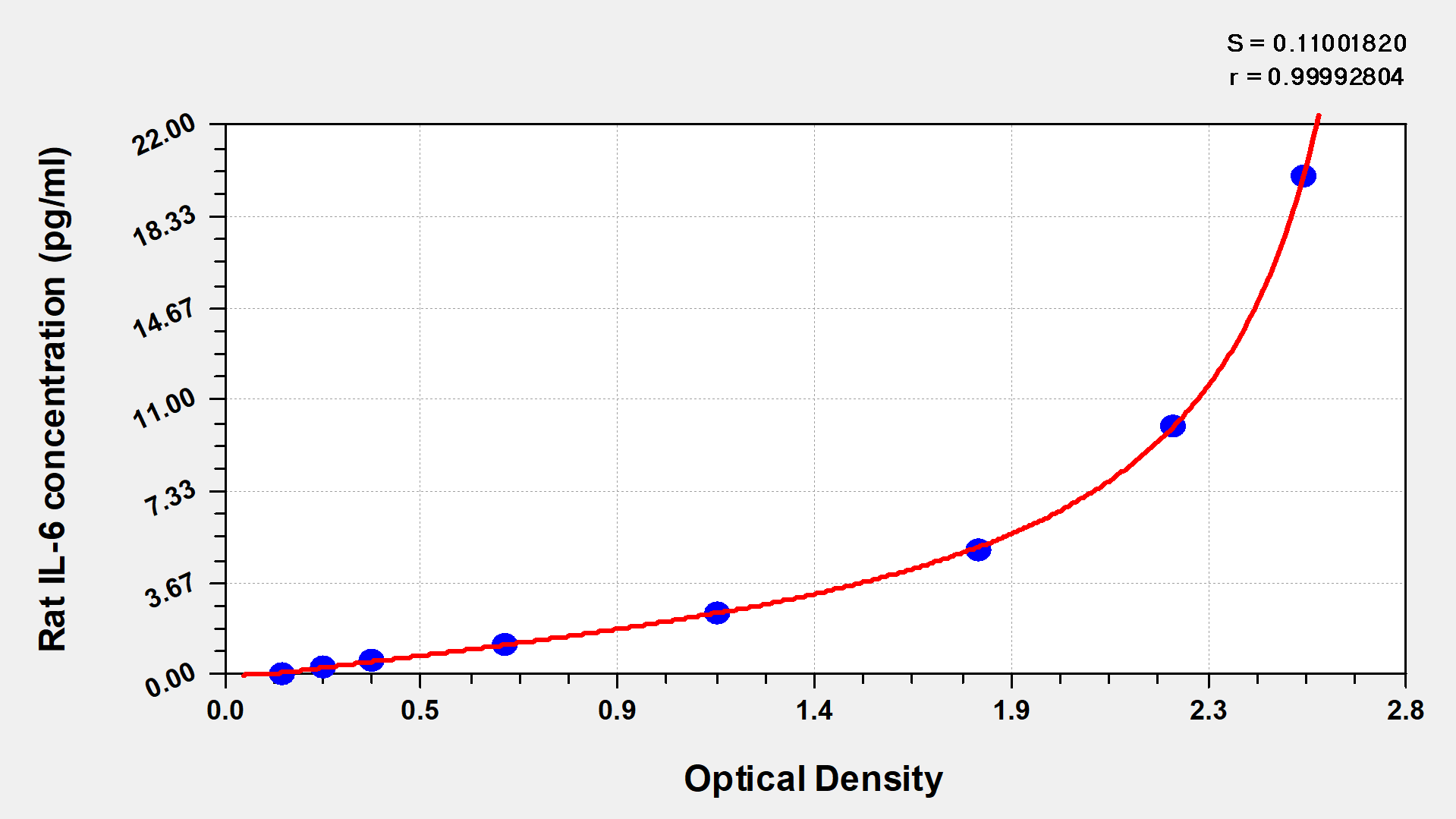Interleukin-6 (IL-6) is a multifunctional cytokine that plays important roles in immune responses, inflammation, and hematopoiesis. Originally identified as a B-cell stimulatory factor, IL-6 regulates acute-phase responses, promotes T-cell activation, and influences the differentiation of various immune cell populations. Multiple cell types produce this cytokine, including macrophages, T-cells, endothelial cells, and fibroblasts in response to inflammatory stimuli. IL-6 signaling occurs through binding to its receptor complex, triggering JAK-STAT pathways that regulate gene expression involved in immune function and inflammatory processes.
The Rat Interleukin 6,IL-6 ELISA KIT (CSB-E04640r) is designed for quantitative measurement of IL-6 in Rattus norvegicus samples. This sandwich ELISA works with serum, plasma, and tissue homogenates with a detection range of 0.312 pg/ml to 20 pg/ml and sensitivity of 0.078 pg/ml. The assay requires 50-100 μl sample volume and can be completed within 1-5 hours. Detection is performed at 450 nm wavelength, providing researchers with a reliable tool for IL-6 quantification in rat specimens.
Application Examples
Note: The following application examples are drawn from a selection of publications citing this product. For additional applications, please refer to the full list of references in the "Citations" section.
This ELISA kit has been used in research examining inflammatory responses and cytokine profiling across various experimental conditions. Studies have applied the kit to measure interleukin-6 levels in plasma and serum samples from rat models, supporting research into inflammatory processes and multi-biomarker analyses.
• Inflammatory response studies: Measuring cytokine levels following experimental interventions and physiological stress conditions
• Multi-cytokine profiling: Concurrent measurement of multiple inflammatory markers including interleukin-6 alongside other pro-inflammatory cytokines
• Bone metabolism research: Examining inflammatory cytokines in studies of bone formation and resorption markers
• Endocrine research: Analysis of interleukin-6 levels in conjunction with hormonal measurements including sex hormones and neuropeptides
• Biomarker correlation studies: Examining inflammatory cytokine relationships with other physiological parameters and disease markers
• Plasma-based analyses: Quantification of circulating interleukin-6 concentrations in blood-derived samples from experimental animal models






